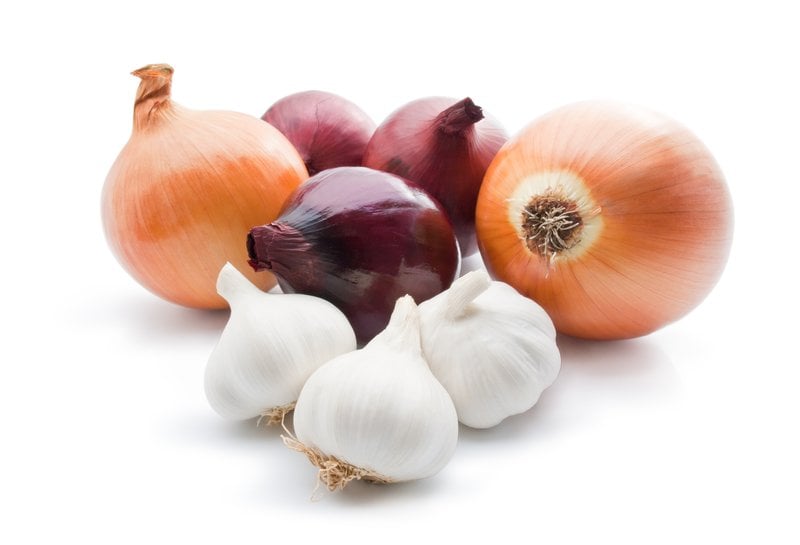Foods for Joints: These 26 Foods Can Help Joint Pain

Let’s face it… waking up in the morning with your body creaking, aching, and sore is never fun. Sometimes it’s your muscles that hurt (say, after a great workout), but often, it’s the joints that cause the bother. You may feel pain in the shoulders, hips, elbows, knees, ankles, or worse, all of the above. And what you want is pain relief so you can get on with your day. Before you reach for the bottle of “Vitamin I” (i.e., ibuprofen), take a look at these foods for joints. Yes, there really are foods that help joint pain!
In today’s article about Foods for Joints, we go over the following:
What Causes Joint Pain?
You don’t need to be getting up in years to experience joint pain. It’s a common complaint that can affect folks of every age. In fact, around 15 million Americans suffer from severe joint pain, according to the CDC. And over 32 million adults in the U.S. have the most common type of arthritis, osteoarthritis.
Joint pain can be caused by an injury, overuse, or an illness, such as:
- Osteoarthritis
- Rheumatoid arthritis
- An infection in the bone or joint
- Bursitis
- Lupus
- Gout
- Infectious diseases like mumps, flu, and hepatitis
- Tendinitis
- Fibromyalgia
- Osteoporosis
While joint pain typically doesn’t land you in the hospital, it may require a visit to your doctor, especially if you don’t know why you have joint pain or if it’s combined with other unexplained symptoms, such as swelling around the joint that’s red, tender, or warm to the touch or causes a fever. Also, if the joint pain is persistent (i.e., does the pain last for days?), then it would behoove you to seek the help of a health-care professional.
Of course, if you have a serious injury and the joint looks deformed or is completely immobile or severely painful, then it’s time to go to the emergency room.
Easing Joint Pain
Especially if you have a chronic joint condition like arthritis, it may be difficult to eliminate joint pain permanently, but that doesn’t mean you can’t ease the pain for improved quality of life. Doctors often recommend:
- Topical pain relievers (including creams or ointments)
- Over-the-counter NSAIDs, like ibuprofen
You may, however, be able to use less pain relievers by focusing on improving joint function and supporting joint health.
How?
To start, stay physically active and keep the joint mobile with stretching to improve range of motion. You may need to visit a physical therapist who can help design a program to strengthen your muscles while preventing injury. In addition, look for low-impact activities, like walking, swimming, and bicycling, to avoid over-stressing the joints.
Keeping your body weight in the healthy range can also help. So, if you’re overweight, it can help to drop pounds.
Massages, warm baths, and adequate rest can also help. Finally, certain foods may also help reduce joint pain and inflammation.
26 Foods For Joints
While it may not be possible to cure the underlying issue causing your joints to hurt, eating foods for joints may help reduce inflammation, ease pain, prevent (or slow) further damage, and improve symptoms. These foods that help joint pain include:
- Fatty or oily fish high in omega-3 fatty acids like sardines, salmon, mackerel, tuna, herring, and anchovies. Eat three to four ounces at least once a week, and preferably twice.
- Leafy green vegetables like spinach, kale, chard, and collard greens, which all provide vitamin D, phytochemicals, and antioxidants
- Cruciferous vegetables, like broccoli, as it provides sulforaphane, which may help slow osteoarthritis progression
- Citrus fruits, such as oranges, limes, and grapefruits, due to their high vitamin C content and anti-inflammatory effects
- Bell peppers, which are also a great source of vitamin C
- Winter squash and sweet potatoes
- Berries, like raspberries, blueberries, and blackberries, due to their high amount of antioxidants
- Cherries and tart cherry juice
- Fiber-rich fruits like apples
- Avocados
- Pineapple or papaya, which provide the enzyme bromelain
- Allium vegetables, like garlic, onion, and leeks
- Grapes
- Whole grains, such as oats, quinoa, and brown rice, especially when used to replace inflammatory refined grains like white flour
- Legumes and beans, which are high in fiber and protein and provide nutrients that can help reduce inflammation. Some of the best choices include red beans, kidney beans, and pinto beans
- Nuts, especially walnuts, due to their omega-3 fatty acid content, as well as pistachios, almonds, and pine nuts
- Chia and flaxseeds, which are also high in omega-3 fats
- Extra-virgin olive oil (EVOO), which contains the natural anti-inflammatory oleocanthal
- Flaxseed oil
- Walnut oil
- Turmeric, which provides curcumin, known for supporting joint health and comfort
- Herbs and spices, such as black pepper, ginger, cinnamon, cayenne, cloves, cumin, chili peppers, rosemary, sage, oregano, and saffron
- Green tea, which contains polyphenols, antioxidants that may help reduce inflammation and slow the destruction of cartilage
- Wine (only in moderation—or, four to six glasses per week)
- Grass-fed meats and dairy products, like yogurt, milk, and cheese (Please note: Some people find that dairy products help, while other people find them to be problematic.)
- Collagen protein (like that found in bone broth), which makes up 70% of cartilage and has been shown to help support healthy, limber joints
Eating more whole foods from plants, especially a variety of vegetables and fruits, has been associated with supporting healthy levels of inflammation and overall joint health and comfort. If you are experiencing joint pain, it may be time to consider a new diet, such as the:
Foods to Avoid (or at least limit) for Joint Health
Just as important as the foods you eat are the foods to avoid as they can lead to increased discomfort. Not surprisingly, Western-style diets like the Standard American Diet (SAD) have been associated with unhealthy levels of inflammation that can lead to increased joint pain. Foods that can exacerbate joint pain include:
- Sugary sweets, desserts, and beverages
- Refined carbs, such as white bread, crackers, and pasta
- Ultra-processed foods, like potato chips and pizza
- Excessive salt
- Trans fats or partially hydrogenated oils
- Red meat
- Processed meats like bacon and hot dogs
- Processed snack foods
- Deep-fried foods
- Corn, safflower, sunflower, and vegetable oils (watch the labels on condiments like mayo and salad dressing as well to avoid these oils)
- Cheese
- Alcohol in excess
Foods That Help Joint Pain: A Recap
If you are one of the millions of people who suffer from joint pain, even with these lists of foods for joints, it’s important to personalize your approach. Some foods can help some people feel better yet make others hurt worse. So, finding the diet that makes your body feel its best can take some trial and error as you add or remove specific foods.
That said, eating more whole, plant-based, nutrient-dense foods and maintaining a healthy body weight has been shown time and time again to support joint health.




 7 Signs Your Body is Seriously Low on Collagen (not just wrinkles)
7 Signs Your Body is Seriously Low on Collagen (not just wrinkles) Health Expert: "Turmeric Doesn't Work (unless...)"
Health Expert: "Turmeric Doesn't Work (unless...)" 3 Warning Signs Your Probiotic Supplement is a Total Waste
3 Warning Signs Your Probiotic Supplement is a Total Waste

